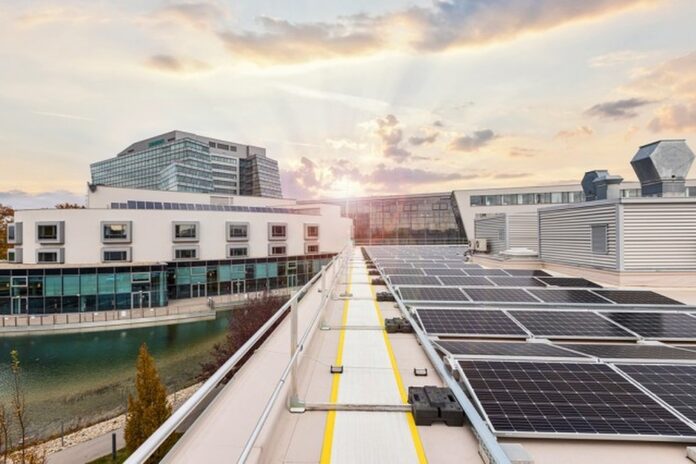The industrial-grade private mobile network is deployed on Siemens campus in Vienna linking the many energy components that make up the microgrid and managing it.
A1 and Nokia have joined forces to provide a private wireless network for Siemens’ microgrid, which is deployed at its Austrian headquarters in Vienna.
The two say the solution shows the advantages of using private wireless to operate critical applications such as enterprise or utility microgrids, and how they can be efficiently implemented with secure, reliable and fast connectivity.
Smartly managed renewables within a microgrid are making an impact on many industrial applications, lowering costs and securing industrial campuses.
Partnership
Nokia is providing the industrial-grade private wireless network, while A1 is providing spectrum along with hosting and management of the newly deployed campus network.
A1 network slicing and edge cloud processing achieve the reliable low latency needed for automated microgrid control responses to manage instantaneous load fluctuations. This infrastructure can be used for additional industrial use cases where wireless connectivity and high reliability are critical.
The private network connects the microgrid assets on the Siemens campus, enabling secure communication between the microgrid controllers and the metering or charging points at guaranteed data rates and with low latency.
Size doesn’t mean less complex
Despite their size, microgrids are complex systems with many elements that need reliable connections as they integrate distributed energy sources such as solar cells and battery storage.
The Siemens Vienna campus microgrid project includes solar generation, electric vehicle (EV) charging, building management and battery storage. Initially, Siemens has implemented 320kW of solar generation and 500kWh battery storage, all to support around 50 EV charging stations.
Voltage levels across the grid are in a constant state of flux with load balancing and optimisation between different sources and loads requiring direct control.
The private network connects the microgrid controller to all assets to manage the grid, ensuring optimal load balancing between energy demand and availability of local distributed energy resources.
Wireless avoid deploying cabling to connect sensors and other devices associated with managing the microgrid results in speeding up its deployment and enables an easier expansion.
First of its kind
Wolfgang Hesoun, CEO Siemens Austria, commented, “One of the challenges of the future is a reliable and at the same time clean supply, transmission and use of energy. Microgrids can significantly contribute to this.
“Our campus project, in combination with the infrastructure of an existing industrial plant, is the first of its kind – and offers many opportunities for innovative research and concrete new solutions.”
Marcus Grausam, CEO A1 Austria, added, “Network slicing in A1’s mobile networks allows organizations to operate private wireless networks which not only offer the best possible security, but also enable completely new applications thanks to lowest possible latency and high reliability.
“By using this private campus network as the foundation of the Siemens microgrid, we are demonstrating how 5G technologies enable the optimal control of energy facilities.”



